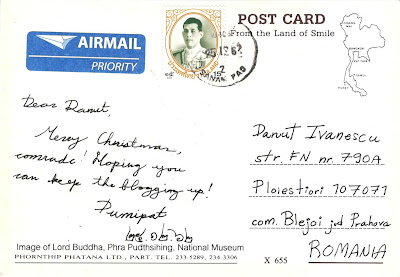 |
| 3333 |
Founded in
Kyoto by the monk
Shinshō (797-873), a pupil of
Kūkai,
as part part of the
Shingon sect,
Eikan-dō (View of Eternity Hall) is the head temple for the
Seizan branch of Japan's
Jōdo-shū Buddhist sect. Formally known as
Zenrin-ji (Temple in a Calm Grove), it is famous for its fall foliage and for its prominence in the past as a center of learning. Its buildings, most of them connected by covered walkways and staircases, are scattered among a range of heights. It also has two other names: Shōju-raigō-san (Mountain where the saints welcome you), while Muryōsu-in (Temple of Immeasurable Fortune).
 |
| 3339 |
In the 11th century, it had a popular head priest named Eikan, who is credited with acquiring the temple's main object of worship, an unusual statue of the
Amida Buddha with his head turned sidewards. According to legend, Eikan was walking through the temple one day, when the statue, which was originally facing forward, turned its head towards the priest and talked to him. In the 13th century, a later head priest converted the temple to the Jodo sect.
 |
| 3372 |
Eikando's main buildings are built alongside the base of the hillside
and are connected by wooden corridors. The first building that visitors
enter is the Shakado (Hall of the historical Buddha) with a small rock garden and beautifully painted sliding doors (
fusuma). Walking through the corridors, visitors also pass by the Miedo which enshrines the Jodo sect's founder Honen and the Amidado (Amida Hall) which houses the Amida statue.
 |
| 3398 |
The temple most recognizable building is its
Tahōtō Pagoda, which is nestled in the trees on the hillside above the temple's other buildings. Its style pagoda
are two story structures, whose first stories are square and second
stories are round. Visitors can walk up to the pagoda, from where the
rest of the temple grounds and the city of Kyoto
can be seen. The view from the pagoda is particularly attractive in
autumn, when the maple trees of the temple grounds are changing colors.


















































